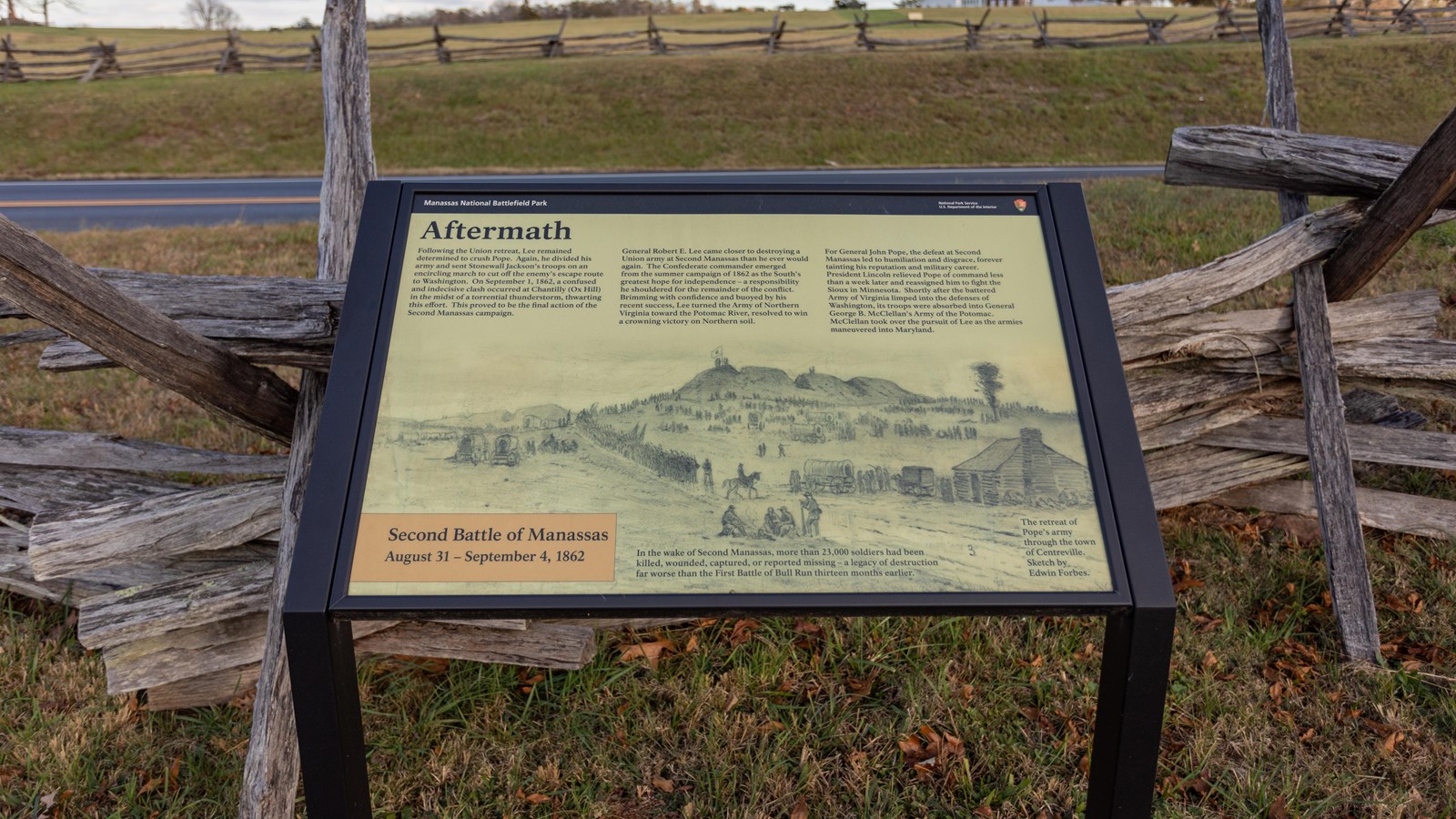Last updated: March 7, 2025
Place
Information Panel: Aftermath

Photo: NPS / Claire Hassler
Historical/Interpretive Information/Exhibits
Second Battle of Manassas, August 31-September 4, 1862
Following the Union retreat, Lee remained determined to crush Pope. Again, he divided his army and sent Stonewall Jackson's troops on an encircling march to cut off the enemy's escape route to Washington. On September 1, 1862, a confused and indecisive class occurred at Chantilly (Ox Hill) in the midst of a torrential thunderstorm, thwarting this effort. This proved to be the final action of the Second Manassas campaign.
General Robert E. Lee came closer to destroying a Union army at Second Manassas than he ever would again. The Confederate commander emerged from the summer campaign of 1862 as the South's greatest hope for independence- a responsibility he shouldered for the remainder of the conflict. Brimming with confidence and buoyed by his recent success, Lee turned the Army of Northern Virginia toward the Potomac River, resolved to win a crowning victory on Northern soil.
For General John Pope, the defeat at Second Manassas led to humiliation and disgrace, forever tainting his reputation and military career. President Lincoln relieved Pope of command less than a week later and reassigned him to fight the Sioux in Minnesota. Shortly after the battered Army of Virginia limped into to defenses of Washington, its troops were absorbed into General George B. McClellan's Army of the Potomac. McClellan took over the pursuit of Lee as the armies maneuvered into Maryland.
In the wake of Second Manassas, more than 23,000 soldiers had been killed, wounded, captured, or reported missing- a legacy of destruction far worse than the First Battle of Bull Run thirteen months earlier.
